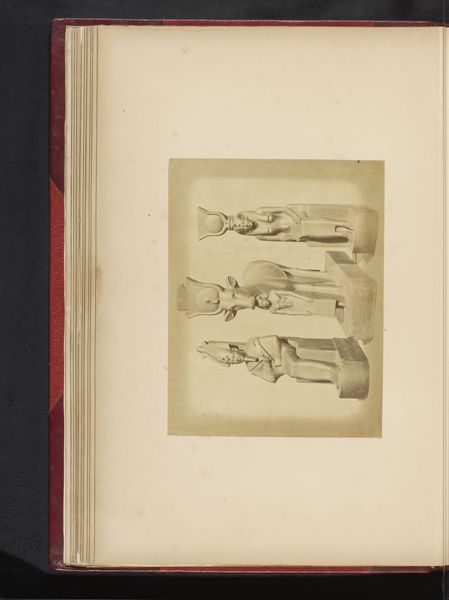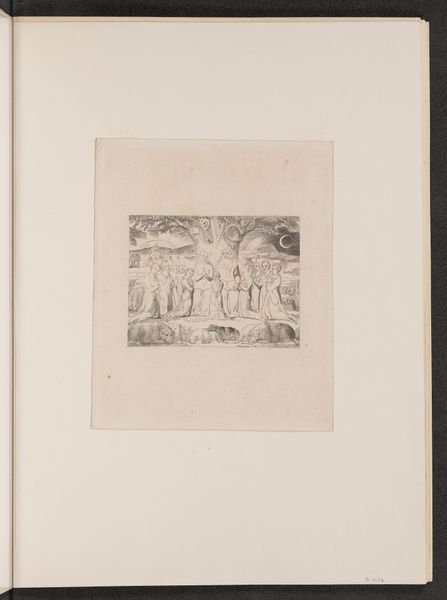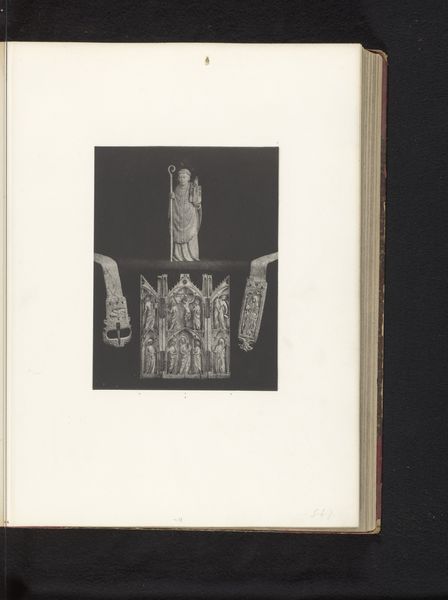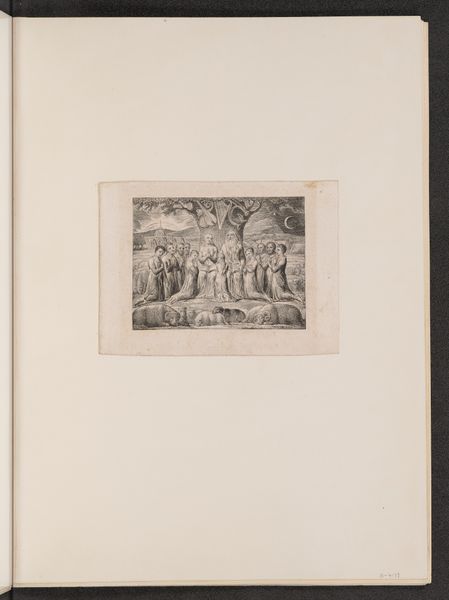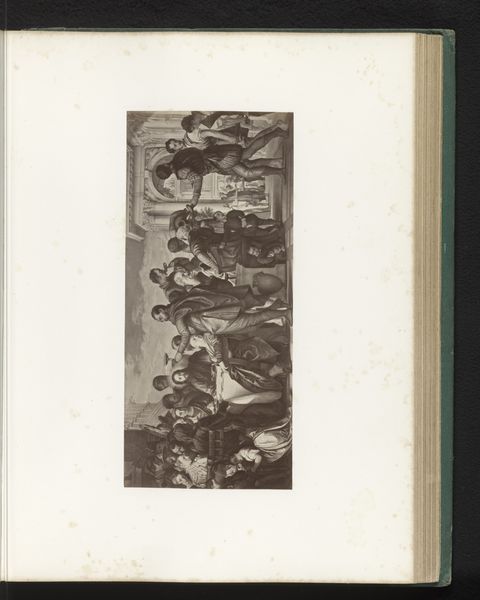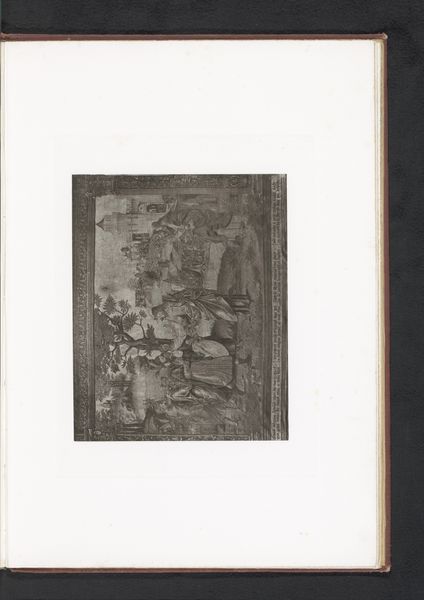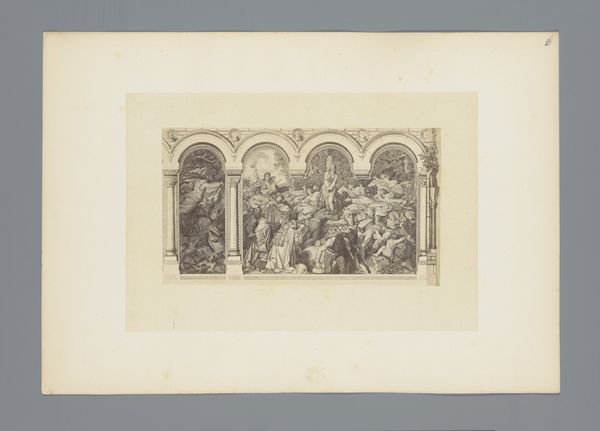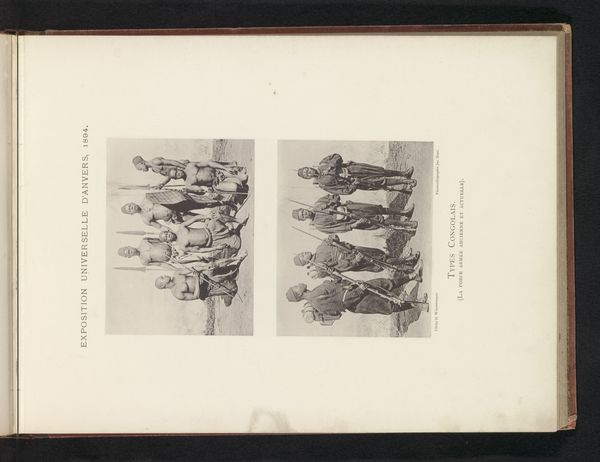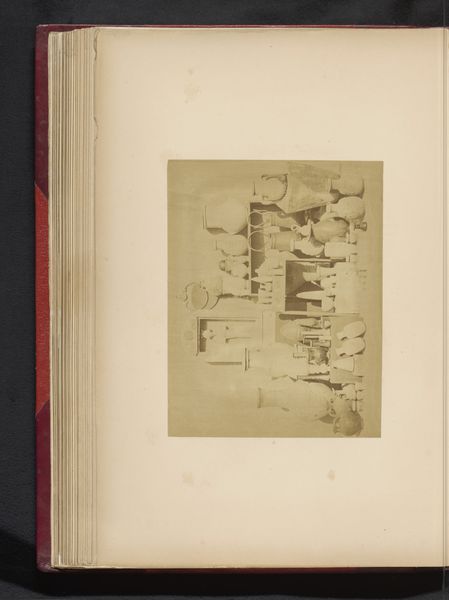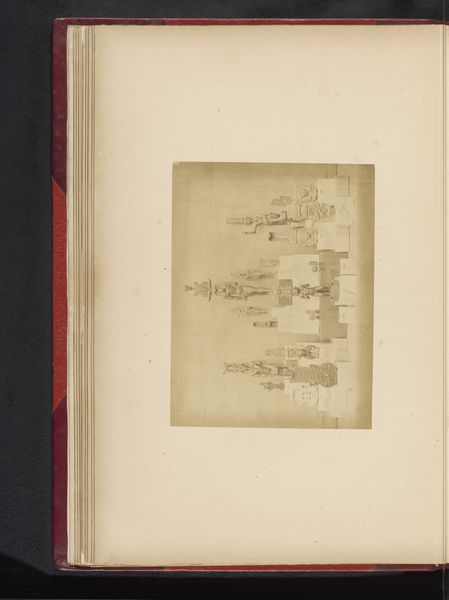
Vijf eikenhouten sculpturen van Bijbelse figuren uit de Heilige Verlosserkerk in Hakendover, opgesteld op een tentoonstelling over religieuze objecten uit de middeleeuwen en renaissance in 1864 in Mechelen 1864
0:00
0:00
print, sculpture, wood
#
medieval
# print
#
figuration
#
11_renaissance
#
sculpture
#
wood
Dimensions: height 175 mm, width 258 mm
Copyright: Rijks Museum: Open Domain
Editor: This print depicts five oak sculptures from the Heilige Verlosserkerk. They were displayed at a religious objects exhibition in 1864. What I find interesting is the varying degrees of detail; some figures appear more refined than others. How might we interpret these formal differences? Curator: Observe the interplay of light and shadow. The figures gain presence not from intricate detailing, but from the textural variation achieved through carving. We see a hierarchy of form, where the central, more adorned figure possesses a dynamic posture, juxtaposed against the columnar stability of the figures above. Editor: Do you mean that their arrangement—their very placement within the frame—contributes to the story? Curator: Precisely. Notice the strategic use of verticality, creating a visual rhythm. The sculptor utilizes contrapposto in some figures to generate movement while grounding them with heavy, vertical drapery. These choices dictate how we perceive the narratives suggested by their forms. Editor: So, even without knowing the exact biblical stories, we can discern the relationships and importance through purely visual means? Curator: In essence, yes. It's the formal relationships that underscore the artistic statement, independent of strict iconographic interpretations. This photograph captures not just religious figures, but also a composition emphasizing proportion, balance, and the intrinsic qualities of the sculptural medium itself. Editor: That's fascinating. I now appreciate how much we can decipher through focusing on structure and form, more so than historical context alone. Curator: Indeed, this perspective permits an appreciation for the choices made in crafting these forms. We see the aesthetic decisions independent of—yet complementing—their religious significance.
Comments
No comments
Be the first to comment and join the conversation on the ultimate creative platform.


